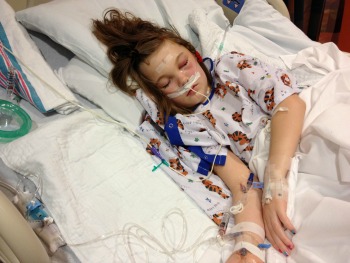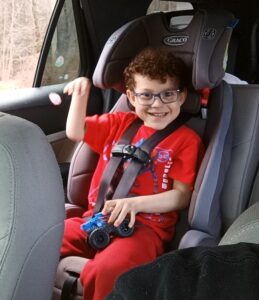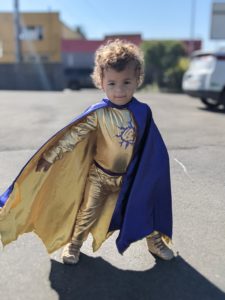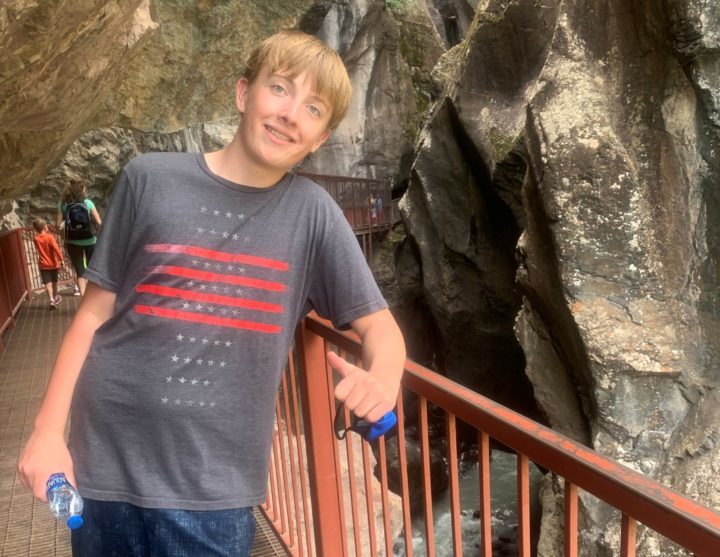Meet Catherine — Stroke at age 9
While I was at work in February of 2013, my daughter’s school called and said to come quickly. They had called a squad, and she was being taken to a nearby hospital. At the time, I just thought maybe she hadn’t had enough to eat or drink that day. When I arrived at the hospital, they brought Catherine on a stretcher into the emergency room. She was moving only her left arm and leg, and she was curled up, unconscious and moaning as if she were in pain. They called for life flight to send her to the children’s hospital, but there was a winter storm that day and the helicopter was unable to come. There were so many questions and concerns from the doctors that were with Catherine, but they settled on their belief that she may have taken some prescription drugs and had a reaction, so they gave her a medicine to counteract what she may have taken. With no improvement, they discussed other options. What seemed like eternity, but was probably only minutes later, they decided they would scan her brain and see what may be going on. She was still unconscious and starting to breathe differently.
I was standing next to the door where they were scanning her brain, and the doctor came out with a folding chair, plopped it right down on the middle of the floor and asked me to sit. My heart felt like it was buried deep into the ground. The doctor let me know that they could see she had blood throughout her brain and she must have had an aneurysm. He stood there and let me know he didn’t think there was anything he could do. He said that a neurosurgeon would check out the scans once we got to the children’s hospital but that I should say good-bye to my little girl. She was just 9 years old.
We waited for the ambulance. I just held her hand and let her know we were waiting for the doctor who could help her and she just had to hold on. After all, in the movies, when people are in comas they can always hear what’s going on around them. Six hours later and still unconscious, we were at the children’s hospital and they were able to get better pictures of her brain. We found she had an AVM (arteriovenous malformation) that had hemorrhaged. The doctors told us they did not typically do brain surgery in that part of the brain, but it was Catherine’s only hope. They let me know she would immediately go into surgery and there was no time to see her. It’s amazing what hope does. After knowing my girl would die, the littlest bit of hope was all I needed. We waited through the surgery. When the nurse came in hours later we found Catherine had made it through! They were able to remove her AVM and stop the bleeding. Now the hard work would begin. They didn’t know if she would even wake, let alone make progress of any sort. It was days until she would breathe on her own again, over a week before she said her first word, a month before she could eat without an NG tube connected to her and even longer to walk. She spent months in the hospital before she could come home.
Recovery is a life-long process when you have a brain injury. Catherine still struggles with weakness from head to toe on her right side, exhaustion, vision and auditory problems. She also has severe language problems (aphasia), even though you can look right at her and not even notice it. She remains in therapy and works hard to get stronger each and every day. In just a few weeks, Catherine will be a teenager. Catherine loves to cheer (we found a special needs team), spend time with her family and friends, swim, paint, and play board games. We have learned over time that many doctors and nurses do not realize that strokes happen in babies, children, and teens, as well as adults. Stroke shouldn’t be the last thing to check when a young person displays stroke symptoms. Immediate care can save the most lives!





